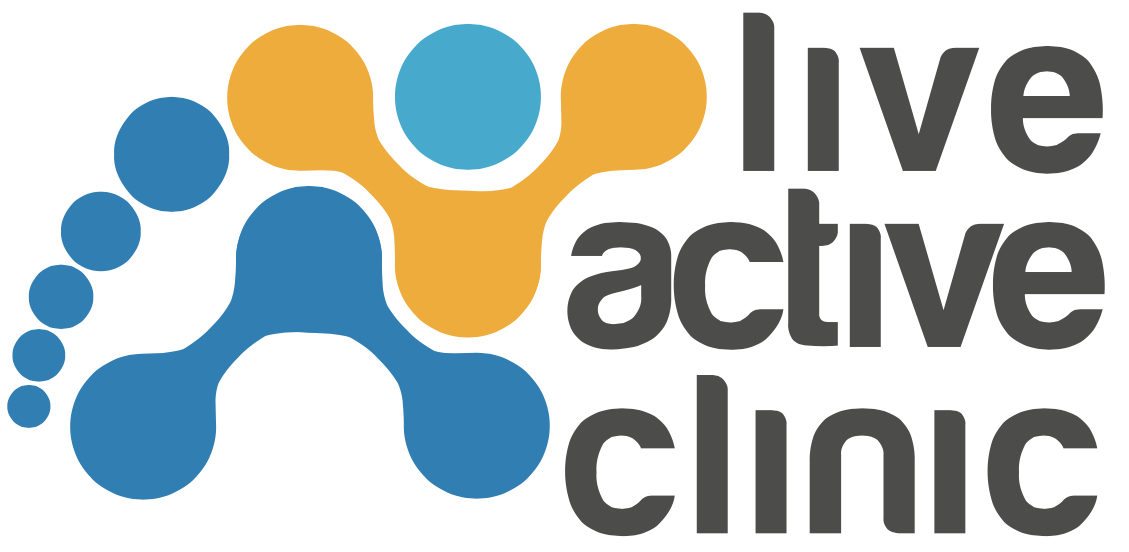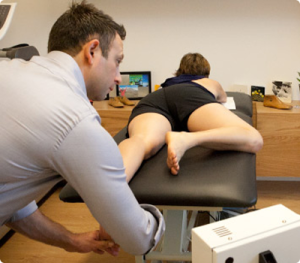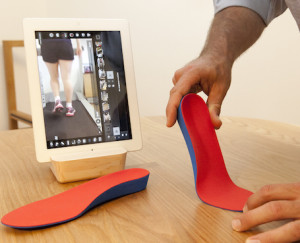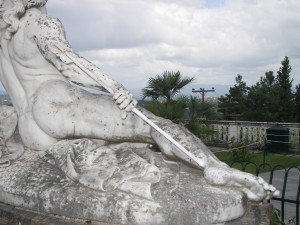 According to legend the weak spot of Achilles, a mighty warrior who survived many battles, was his heel. Supposedly, he was hit in the heel by an arrow that made him plummet to his death. Achilles tendon pain can be excruciating and downright depressing. The crippling pain may render you unable to even walk. If you ever experience this pain, you will most certainly feel like your weak spot has been hit! [1]
According to legend the weak spot of Achilles, a mighty warrior who survived many battles, was his heel. Supposedly, he was hit in the heel by an arrow that made him plummet to his death. Achilles tendon pain can be excruciating and downright depressing. The crippling pain may render you unable to even walk. If you ever experience this pain, you will most certainly feel like your weak spot has been hit! [1]
What is the Achilles tendon?
The Achilles tendon (also known as the calcaneus tendon) is the strongest tendon in the human body. It is attached to both the soleus and gastrocnemius muscles of the calf and from about the middle of the calf it stretches in a spiral towards the heel where it attaches to the calcaneus bone (heel bone).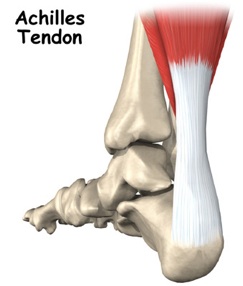
The Achilles tendon is surrounded by a paratendon which is made up of a single cell layer instead of being encased in a synovial sheath. These cells, that form the tendon’s outer parts, have ample blood supply while the middle portion of the tendon is avascular and this is mostly where injuries occur.
The sural nerve provides the chief nerve supply to the Achilles tendon while the tibial nerve also makes a small contribution. Because nerves innervate the tendon any damage to it can cause pain impulses to be transported to your brain. That’s why it hurts so much! [2][3][4]
What are the functions of the Achilles tendon?
The functions of any tendon include transferring force that is generated in the muscles to the bones of the skeleton and absorbing external force in order to limit or prevent damage to the muscles. To perform these functions considerable strength, elasticity and flexibility is essential. The Achilles tendon contains elastin fibres that make it somewhat elastic and flexible. Collagen fibres are responsible for the strength of the tendon and studies have shown that the Achilles tendon can endure a load of 12.5 times your body weight while you run. How’s that for super strength? [3]
The two muscle to which the Achilles tendon attaches, the soleus and gastrocnemius muscles of the calf, have separate functions that relate to movement of the foot and leg. We need these muscles to work properly along with the Achilles tendon so that we can walk, run and dance. [5][6]
Injuries of the Achilles tendon
It is ironic that the Achilles tendon, being the thickest and strongest tendon in the body, is the most common tendon to tear or rupture. Achilles tendonitis occurs in approximately 10% of runners and furthermore gymnasts, dancers, and tennis players are also commonly affected. It has been documented that the incidence of Achilles tendon rupture and injury has risen significantly since about the 1980’s. Men are more likely to suffer such an injury than women where the most classic patients are men in their 30’s who engage in sports that they do not usually practice. Other conditions that can bring about Achilles tendon pain include tendinosis, tendonitis, peritendonitis and retro-calcaneal bursitis of which all are caused by overuse.
Injuries to the Achilles tendon can be acute or chronic and both intrinsic and extrinsic factors may be involved. Calve muscle dysfunction, tendon vascularity age, body weight, gender, height, how the foot arches and lateral ankle instability are examples of intrinsic factors. Extrinsic factors include poor sporting techniques, changes in sports training patterns, previous injuries, improper footwear and training on inappropriate surfaces. This gives running in heels a whole new meaning.
The main reason why Achilles tendon injuries occur is due to overloading during vigorous exercise. When you overload the tendon frequently, it starts to either degenerate or the sheath becomes inflamed. It may also happen that the tendon becomes inflamed along with an inflammatory response. When you push your limits, you may also end up damaging your Achilles tendon therefore it is essential to allow the tendon to repair after exercise or overload and even after mild injuries to prevent weakening and rupture of the tendon. [2][4]
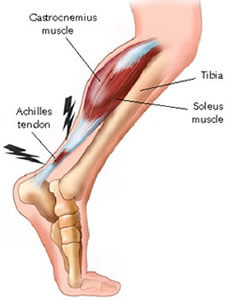
Mostly Achilles tendon injuries happen in the tendon’s body, the part about a thumbs length above the heel bone. Injuries can also occur where the Achilles tendon attaches to the heel bone and this is called “dancers’ heel”. Another site where injury may occur is where the tendon is attached to the soleus and gastrocnemius muscles of the calf.
The most common way that the Achilles tendon is injured, is due to torsion of the foot.
Torsion can occur due to poor biomechanical function of the foot and ankle causing excessive movement and strain on the achilles tendon.
The impact of Achilles tendon injury
An injury to the Achilles tendon can be very debilitating, not only because of the pain it causes, but also because of the fact that your ability to run, dance or even walk becomes severely limited or impossible following such an injury. It is usually necessary to take time off from sporting or dancing. The recovery process is normally slow and the recovery from the injury is often incomplete. [2]
Seeing as the diagnosis of Achilles tendon injury could be delayed, much suffering is experienced. People may suffer from pain for months before finally being diagnosed correctly and this could become unbearable.
Running and walking may become excruciatingly painful and debilitating. Therefore, going to work may be very difficult and time away from work can be very frustrating, not to mention the financial consequences. [6]
Will I be able to run and walk again?
Don’t fret there are various ways to manage Achilles tendon injuries. Early treatment of Achilles tendon pain is usually conservative. Seeking help early on is the best scenario since treatment becomes more complex as the condition becomes more chronic.
Early on it is advised to get a lot of rest, use ice packs and take pain medication. Furthermore you must consider changing the shoes that you wear as these may cause malalignment. To limit damage, you can also adapt your training techniques and lose some excess weight. If you want to continue training, you need to remember to warm up slowly and properly before exercising.
Conservative measures include increasing foot and ankle function using mobilisations, foot and ankle rehabilitation techniques and the use of orthotics.
Achilles tendon pain can be excruciating, but on the positive side, there is help out there and the sooner you act, the better the outcome will be. So run, walk and dance but remember to book in to see Dom our podiatrist!


